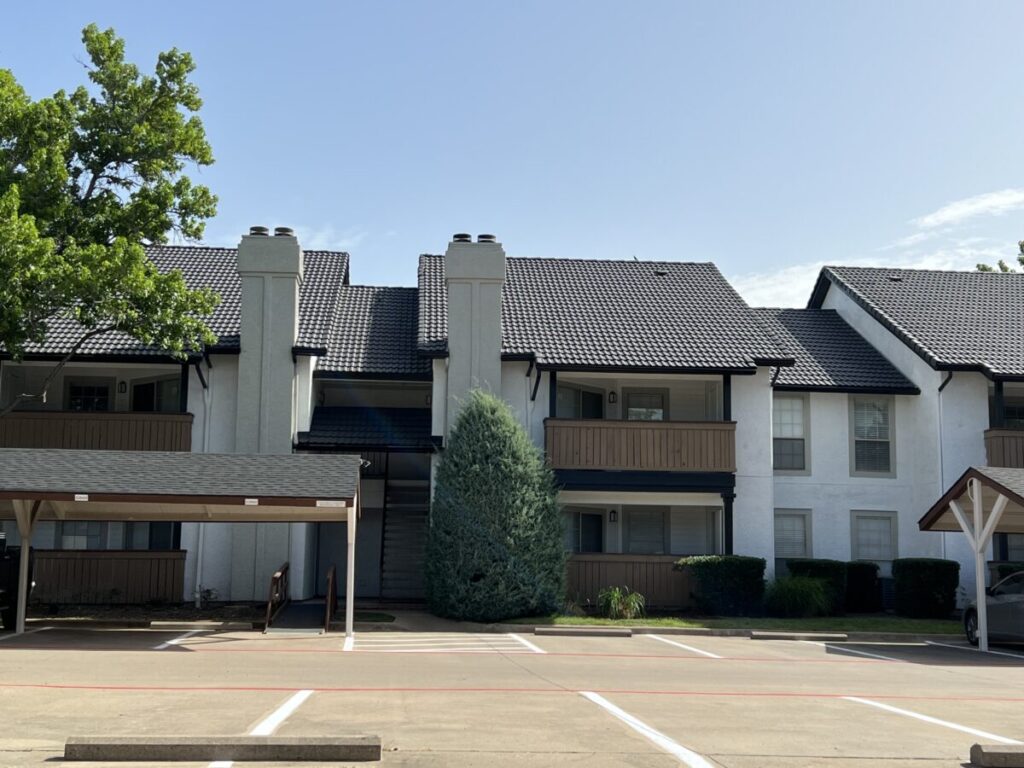Summer Heat and Your Multi-Family Roof: Preventing Heat-Related Damage
Summer’s scorching temperatures pose a serious threat to multi-family roofing systems, with traditional asphalt surfaces reaching temperatures up to 150°F on sunny days. As property managers and building owners know, protecting your roof investment during the hottest months isn’t just about comfort—it’s about preventing costly damage that can impact your entire property portfolio. At JNL Roofing Contractors, we’ve spent years helping multi-family property owners navigate the unique challenges that extreme heat brings to commercial roofing systems.
Our team understands that multi-family properties face distinct roofing challenges compared to single-family homes. With multiple units depending on one roofing system, the stakes are higher, and the consequences of heat-related damage can affect numerous tenants simultaneously. What sets JNL Roofing Contractors apart is our comprehensive approach to multi-family roofing protection. We don’t just fix problems after they occur—we help property owners implement proactive strategies that prevent heat-related damage before it starts, minimizing disruption to tenants while protecting your investment.

Understanding Heat-Related Roof Damage
Summer heat affects multi-family roofing systems through several destructive mechanisms that many property managers don’t fully appreciate until problems arise.
Thermal Shock and Material Stress
One of the most destructive forces is thermal shock—the rapid expansion and contraction that occurs as roofing materials heat up during the day and cool down at night. Commercial roofs can reach surface temperatures exceeding 180°F during peak summer afternoons, then drop 50-70 degrees after sunset. This constant cycle puts tremendous stress on roofing materials, fasteners, and seams.
Metal roofing components are particularly susceptible to thermal movement, which can cause screws to loosen, seams to separate, and protective coatings to crack. Even minor gaps created by thermal stress can become entry points for moisture, leading to serious structural problems.
UV Radiation and Material Degradation
Ultraviolet radiation works continuously to break down roofing materials, even on cloudy days. Asphalt-based systems are especially vulnerable, as UV rays gradually alter their chemical composition, causing materials to become brittle and prone to cracking. Combined with extreme heat’s drying effects, this can significantly shorten a roof’s lifespan.
High summer temperatures often coincide with increased humidity, creating conditions where roofing materials absorb additional moisture during their expanded state. This trapped moisture can cause water damage underneath materials and accelerate deterioration—particularly problematic in multi-family buildings where issues can affect multiple units.
Identifying Early Warning Signs
Recognizing early signs of heat-related roof damage allows property managers to address problems before they become expensive emergency repairs.
Visual indicators include:
- Peeling, blistering, or bubbling on roofing surfaces indicating compromised material integrity
- Discoloration, bleaching, or darkening signaling UV damage
- Warped metal components, cracked or curling shingles, and gaps between materials
- Loose screws, separated seams, and damaged flashing around penetrations
Interior warning signs:
- Increased indoor temperatures in upper units
- Higher than normal cooling costs
- Moisture stains on ceilings or walls
Pay particular attention to areas around roof penetrations like vents, skylights, and HVAC equipment, where thermal movement often causes the most problems.
JNL’s Proven Heat Protection Strategies
Protecting multi-family roofs requires a comprehensive approach addressing both immediate threats and long-term prevention.
Preventive Maintenance Programs
Regular Inspections: We recommend quarterly summer inspections focusing on areas most susceptible to heat damage. Our technicians identify early signs of thermal stress and UV damage that property staff might miss.
Proactive Cleaning: Removing debris, dirt, and organic growth helps materials reflect heat more effectively and prevents dark areas that absorb additional thermal energy.
Ventilation Optimization: Proper attic and roof ventilation is crucial for multi-family buildings. We evaluate and improve ventilation systems to ensure hot air escapes efficiently, reducing thermal load on materials and improving energy efficiency.
Energy Efficiency and Cost Benefits
Protecting your multi-family roof from heat damage delivers benefits extending far beyond avoiding repair costs.
Reduced Cooling Costs: A properly protected roof system can reduce building cooling costs by 10-30%, benefiting both property owners and tenants. In multi-family properties where utilities are included in rent, these savings directly impact your bottom line.
Extended Roof Lifespan: Heat protection measures can extend your roof’s useful life by several years, dramatically improving ROI. When commercial roof replacement can cost $15,000-$25,000 per building or more, preventive measures that add even two years provide substantial value.
Improved Property Value: Well-maintained roofing systems with documented heat protection measures appeal to investors and lenders, potentially improving property valuation and financing options.
Working with Professional Contractors
Multi-family roofing requires specialized expertise beyond residential knowledge. Look for contractors with specific multi-family experience, understanding of building codes for multi-family properties, and ability to work with property management schedules.
The best contractors offer comprehensive services including regular maintenance programs, emergency response capabilities, and proactive communication about developing issues. This approach helps you stay ahead of problems rather than constantly reacting to them.
Planning for Long-Term Success
Successful multi-family roof management requires thinking beyond immediate repairs to develop long-term protection strategies. Establish annual maintenance budgets allowing for proactive care rather than emergency repairs. Most property owners find that investing 1-2% of building value annually in preventive maintenance saves money compared to reactive approaches.
Maintain detailed records of all roofing work, inspections, and maintenance activities. This documentation helps track roof condition over time, plan for future needs, and demonstrate proper care to insurance companies and potential buyers.
Summer heat poses real threats to multi-family roofing systems, but with proper preparation, maintenance, and professional support, these challenges become manageable aspects of property ownership.
Ready to Protect Your Multi-Family Property Investment? Contact JNL Roofing Contractors today for a comprehensive roof evaluation and customized heat protection plan. Our multi-family roofing experts will assess your property’s specific needs and develop strategies to keep your roof performing optimally through the hottest summer conditions. Call us now to schedule your consultation!
